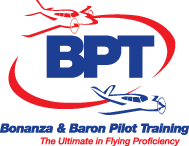
1. Arrange the choices on the right in order of priority with regard to right–of–way over other aircraft.
a. Glider
b. Airship
c. Aircraft in distress
d. Airplane or helicopter
e. Balloon
2. Aerobatic flight is not allowed:
a. Within 5 miles of any airport
b. Within 2,000 feet of the surface
c. When the flight visibility is less than 5 statute miles
d. Over any congested area of a city, town, or settlement
3. True or false: The inability of a required flight crewmember to perform normal flight duties due to in-flight injury or illness is a requirement for immediate notification of the NTSB.
4. You’re in IMC and you start to notice your instruments are displaying erroneous indications. You suspect a static port blockage. What indications will you get on your instruments if you have a static blockage?
a. Airspeed indicator reads inaccurately; altimeter goes to 0; VSI reads 0
b. Airspeed indicator reads 0 knots; altimeter remains constant; VSI reads 0
c. Airspeed indicator reverse indications; altimeter remains constant; VSI shows a climb
d. Airspeed indicator reads inaccurately; altimeter remains constant; VSI reads 0
5. Which of the following are required to maintain instrument experience in an aircraft?
a. Stalls in IMC of with a view-limiting device
b. Unusual attitude recoveries
c. Holding procedures
d. Emergency descents
6. The Surface Analysis Chart depicts:
a. Actual pressure systems, frontal locations, cloud tops, and precipitation at the time shown on the chart.
b. Frontal locations and expected movement, pressure centers, cloud coverage, and obstructions to vision at the time of chart transmission.
c. Actual frontal positions, pressure patterns, temperature, dewpoint, wind, weather, and obstructions to vision at the valid time of the chart.
1. e, a, b, c, d; 2. d; 3. True 4. d; 5. c; 6.c



